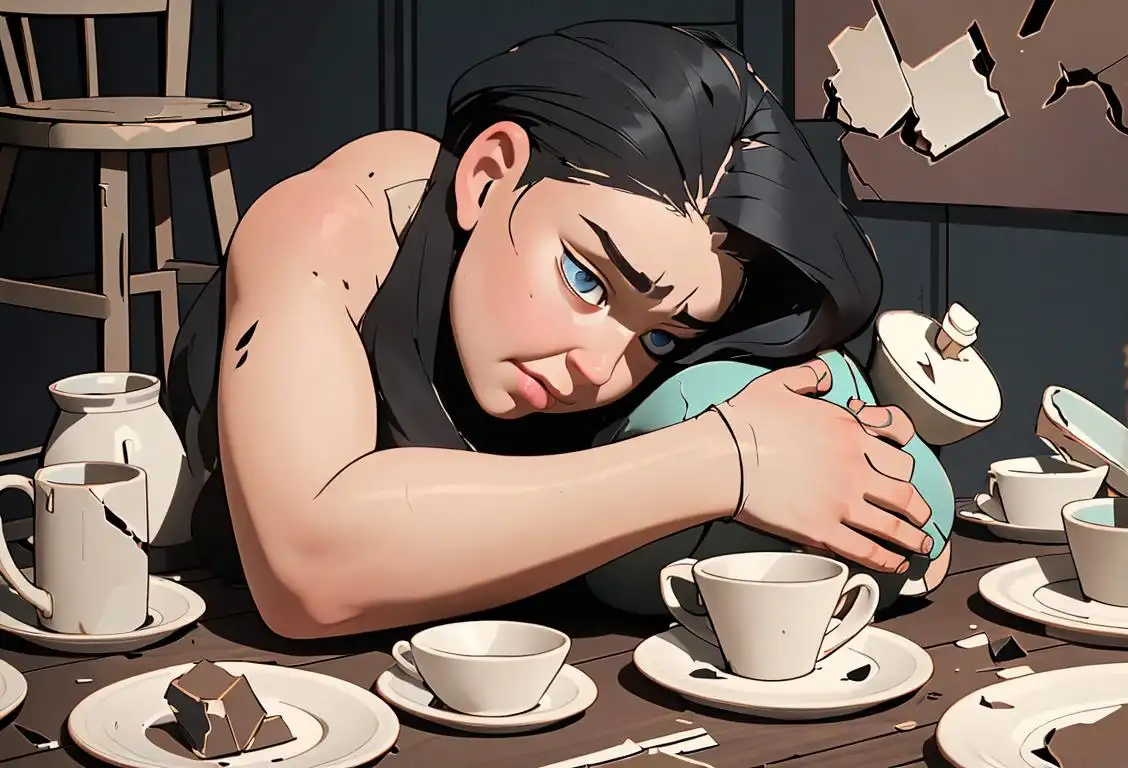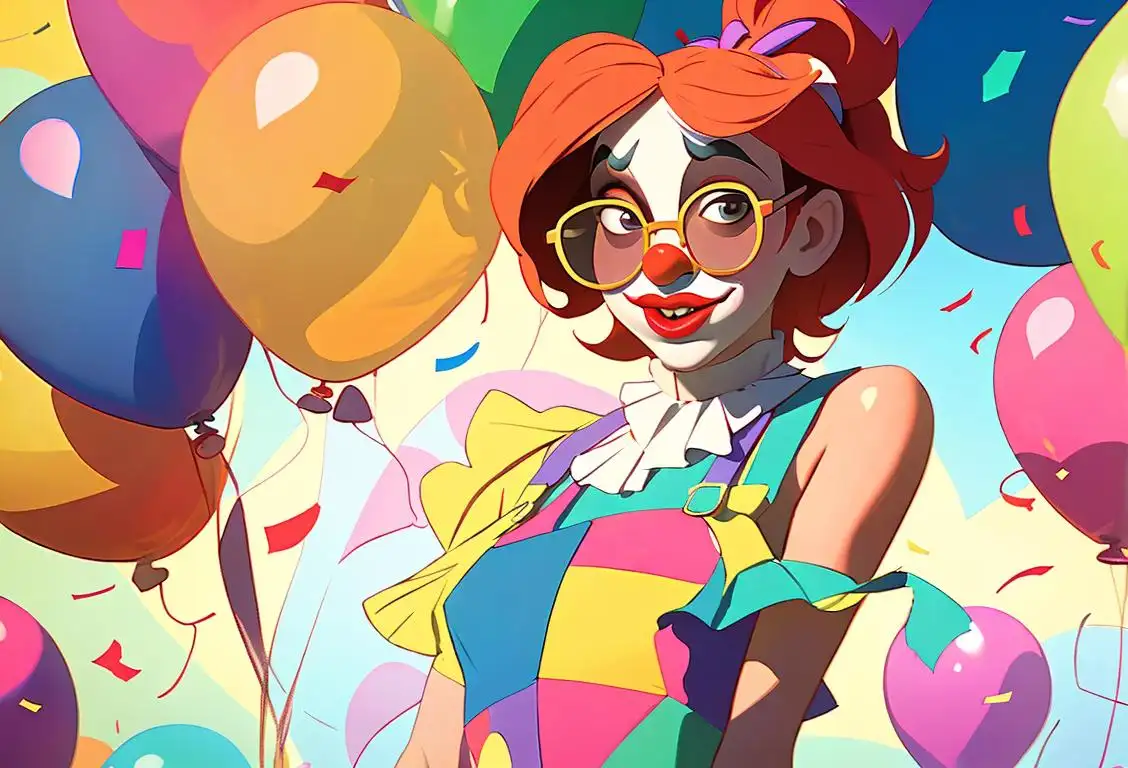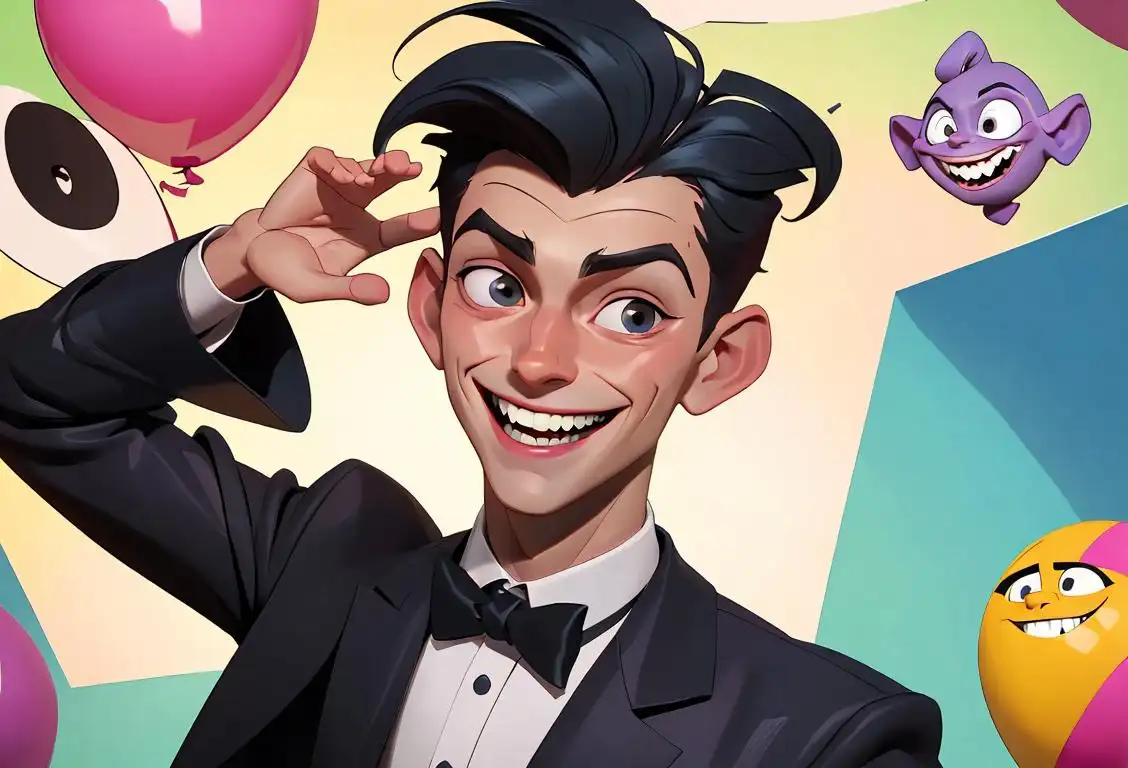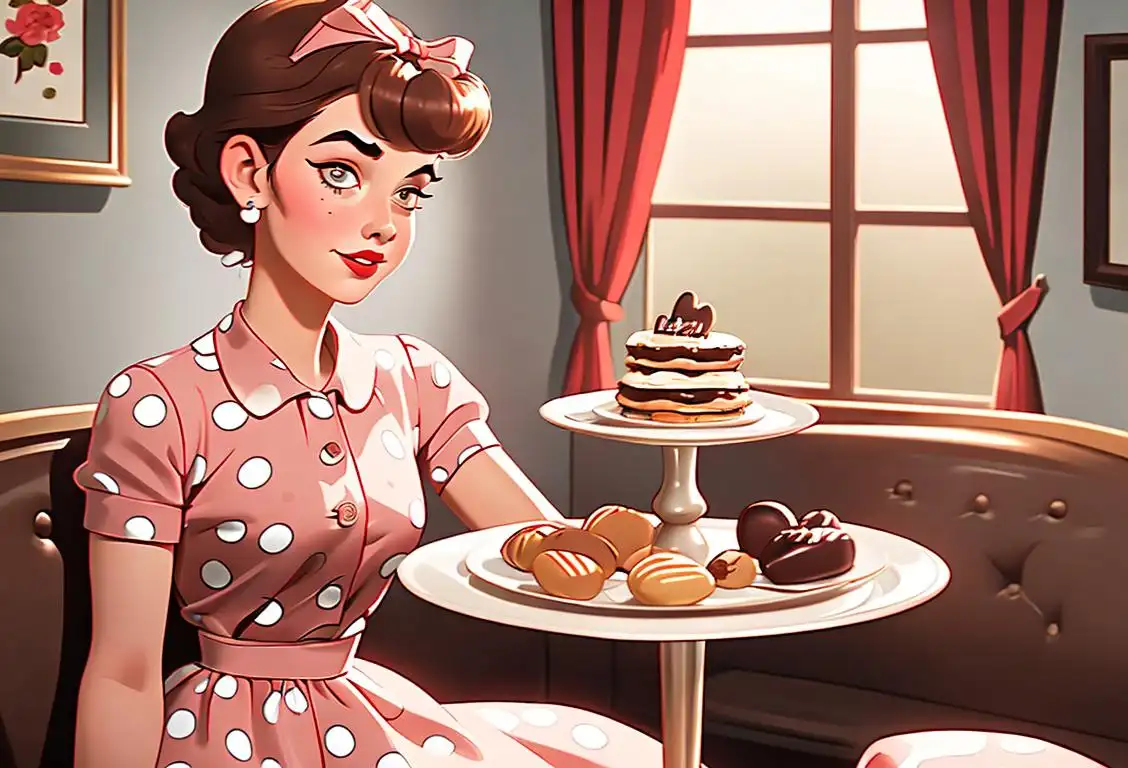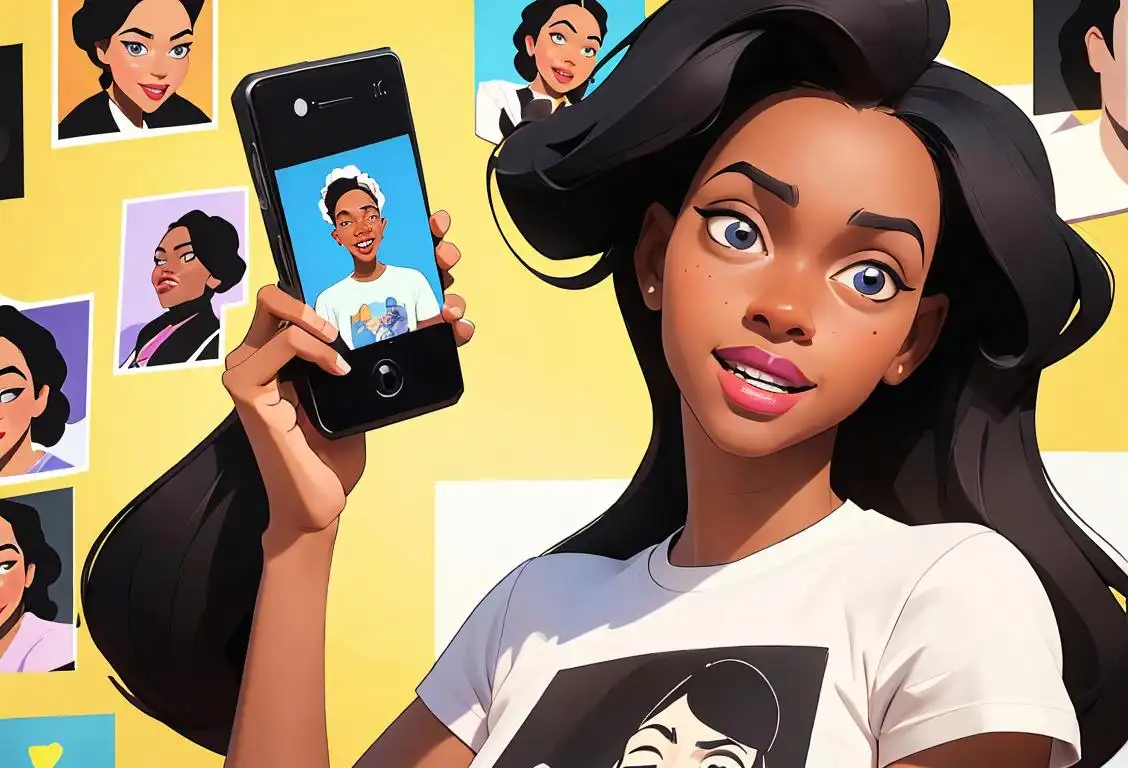National Gorilla Suit Day
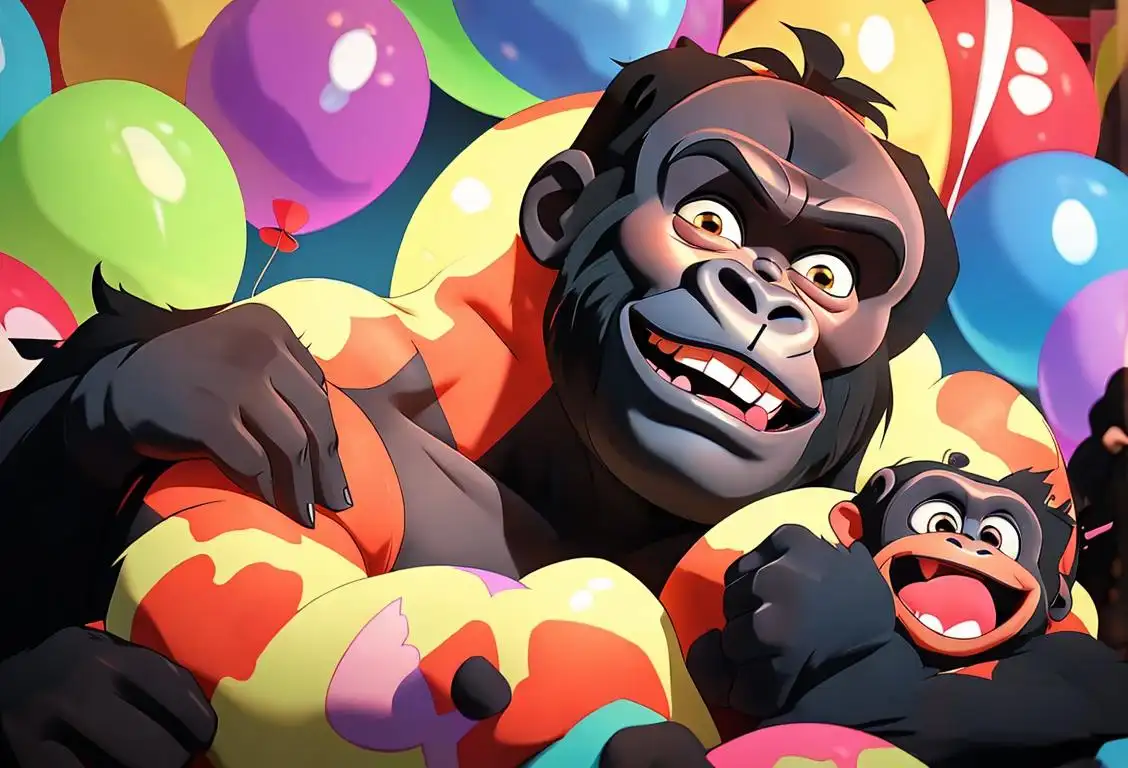
Welcome to the wacky world of National Gorilla Suit Day! Grab your sense of humor and get ready for an adventure with our furry friends. This is the one day of the year when we all go bananas and embrace our inner gorilla. So, strap on your imaginary fur suit and let's dive into the hilarious history of this offbeat holiday!
When is Gorilla Suit Day?
It's national gorilla suit day on the 31st January.
The Birth of National Gorilla Suit Day
Every year on January 31st, National Gorilla Suit Day swings into action. This bizarre celebration originated from the mind of the legendary cartoonist Don Martin, who was part of the iconic MAD magazine. In 1963, Martin created a cartoon titled 'National Gorilla Suit Day.' The cartoon depicted people wearing gorilla suits engaging in all sorts of humorous and ridiculous activities.
Since then, fans of Don Martin and MAD magazine have adopted the idea of Gorilla Suit Day, turning it into an actual annual event. The day encourages participants to embrace their silliest side by donning gorilla suits and letting loose with pranks, goofy encounters, and general monkey business.
Let's Go Ape!
On National Gorilla Suit Day, you might encounter people strolling the streets dressed as primates or turning their workplaces into makeshift jungles. It's a day where anything goes, as long as you've got a gorilla suit and a mischievous smile on your face!
This peculiar holiday has gained popularity over the years, with gorilla-themed events popping up all around the world. From flash mobs of gorillas taking over city squares to impromptu gorilla parades in local parks, the celebrations are as lively and entertaining as you can imagine.
History behind the term 'Gorilla Suit'
1889
Birth of the term 'gorilla suit'
The term 'gorilla suit' was coined in 1889 when a British company called Philip Morris & Co. Ltd first advertised a wearable costume resembling a gorilla, which they named a 'gorilla suit'. This groundbreaking invention would go on to become synonymous with costumes imitating gorillas and other primates.
1887
The First Gorilla Suit
In 1887, a theatrical costume maker named Charles Underwood created what is believed to be the first gorilla suit. Underwood made the suit for the play 'Uncle Tom's Cabin,' where it was used to depict a gorilla chasing a young girl. The suit was made of fur and featured realistic-looking hands, feet, and a mask, capturing the essence of a gorilla.
1932
Creation of the first gorilla suit
In 1932, a man named Charlie Gemora created the first gorilla suit for the movie 'The Ape' starring Boris Karloff. Gemora's gorilla suit was made of natural rubber, which made it more flexible and realistic than previous attempts.
1864
The Discovery
The term 'gorilla suit' originated in 1864 when a French explorer named Paul Du Chaillu presented the first scientific evidence of the existence of gorillas to the Western world. His book, 'Explorations and Adventures in Equatorial Africa', described his encounters with these massive primates in the jungles of West Africa. This discovery fascinated the public and sparked the imagination of many artists and performers.
1884
Creation of the word 'gorilla'
The term 'gorilla' was first introduced in 1847 by Thomas S. Savage, an American missionary who explored the jungles of West Africa. However, it wasn't until 1884 that the word was officially recognized with the publication of a scientific paper by anthropologist Paul du Chaillu. This paper described a new species of great apes that he encountered during his expeditions in Equatorial Africa. The word 'gorilla' was derived from the Greek word 'gorillai,' meaning 'a tribe of hairy women,' as these great apes shared similar characteristics with humans, including their hairiness and social structures.
1925
The First Gorilla Suit
The term 'gorilla suit' first appeared in 1925, when the concept of a person dressing up as a gorilla for entertainment purposes took off. The idea originated from the vaudeville era in entertainment where performers sought to add humor and novelty to their acts. Costumes depicting animals were popular, and the gorilla suit quickly became a standout favorite due to its comedic potential and the element of surprise it brought to audiences.
1832
First documented use of 'gorilla'
The term 'gorilla' was first used in documentation in 1832, when the Western world discovered the existence of these magnificent primates. Gorillas were initially thought to be mythical creatures, until an American missionary named Thomas Savage brought back accounts and specimens from Africa.
1880
The invention of the gorilla suit
In the year 1880, an American zoologist named Carl Akeley created the first gorilla suit. Akeley wanted to study and observe gorillas in their natural habitat without alarming them, so he came up with the idea of disguising himself as a gorilla. He meticulously crafted a realistic-looking suit made of foam rubber, horsehair, and wire. This invention allowed Akeley to get closer to gorillas and provided valuable insights into their behavior.
1883
Introduction of the term 'gorilla suit'
The term 'gorilla suit' was first introduced in 1883, and it refers to a costume that resembles a gorilla. This type of costume typically consists of a full-body fur suit that mimics the appearance of a gorilla, complete with a mask or hood that has a realistic gorilla face. The gorilla suit gained popularity in the entertainment industry as a way to portray a gorilla in movies, television shows, and live performances.
1888
Gorillas in popular culture
Gorillas captivated the public's imagination in the late 19th century, thanks to expeditions and the emergence of zoos. Several books, such as 'Gorilla Hunters' by R.M. Ballantyne, featured gorillas as fearsome creatures. These portrayals fueled the fascination with gorillas and laid the foundation for the term's cultural significance.
1920s
Gorilla suits in vaudeville
In the 1920s, vaudeville comedy acts started to incorporate gorilla suits as part of their performances. Comedians would dress up as gorillas to create humorous and unexpected situations on stage. This addition brought a new element of slapstick and physical comedy to the vaudeville shows, entertaining audiences with their wild antics and exaggerated movements.
1933
Gorilla suits gain popularity in movies
After the success of 'The Ape,' gorilla suits started to gain popularity in the film industry. Many movies in the 1930s and 1940s featured gorilla characters, often played by actors wearing gorilla suits. These suits were typically made of fur and had realistic detailing to resemble actual gorillas.
1933
Popularization in film
The 1933 film 'King Kong' featured a famous scene in which the film's protagonist, Carl Denham, presents a captured gorilla to a New York audience. To add excitement to the spectacle, a performer in a gorilla suit was used to portray the vicious Kong. This led to an increased interest in gorilla suits and their use in both comedic and dramatic contexts in the film industry.
1885
The Costume
In 1885, a German performer named Carl Hagenbeck introduced a captivating act to the stage – a realistic gorilla costume. Hagenbeck's 'gorilla suit' became an instant sensation, attracting huge crowds wherever it was showcased. This innovative use of a costume allowed performers to portray gorillas in a more lifelike manner, captivating audiences with the illusion of interacting with these powerful and mysterious creatures.
1933
Gorilla Suits in Film
The popularity of gorilla suits soared in 1933 with the release of the classic film 'King Kong.' The movie showcased a giant gorilla mesmerizing audiences with his monstrous appearance and ability to wreak havoc. Inspired by 'King Kong,' gorilla suit performers became increasingly sought after, leading to the steady development of the gorilla suit as a prominent part of costume culture and entertainment.
1901
Bringing Gorillas to the Screen
In 1901, an American actor named William Ranous donned a gorilla suit in the short film 'How a French Nobleman Got a Wife through the New York Herald Personal Columns.' This was one of the earliest instances of a gorilla suit appearing on film. Ranous' portrayal set the stage for gorilla suits to become a recurring trope in cinema.
1920s-1930s
Gorilla suit comedy becomes popular
During the 1920s and 1930s, gorilla suit comedy became a popular form of entertainment. Comedians and actors would don gorilla suits to perform humorous routines, often involving misunderstanding or mistaken identity. This comedic style was a hit among audiences, and gorilla suits became a staple in slapstick comedy.
1917
Gorilla suit's debut in entertainment
The year 1917 marked the first official appearance of a gorilla suit in an entertainment context. A Broadway musical comedy called 'The Specter' featured an actor wearing a gorilla costume. The suit was designed to be comical and exaggerated, emphasizing the stereotype of a large, ferocious ape. This portrayal paved the way for gorilla suits to become a prevalent trope in popular culture.
1951
Gorilla suits in comedy
Gorilla suits gained immense popularity in comedy during the 1950s, thanks in large part to the influence of comedian and actor Don Martin. Martin, known for his work in MAD Magazine, frequently used gorilla suits in his comic strips and sketches, creating memorable and humorous scenes that further cemented the association between gorilla suits and comedy.
1933
The birth of gorilla suits
The iconic gorilla suit concept emerged in 1933 with the release of the movie 'King Kong'. The film featured a life-size mechanical gorilla replica and an actor wearing a gorilla suit for close-up shots. This groundbreaking use of a gorilla suit created a lasting association between gorillas and costume performances, capturing the imagination of audiences worldwide.
1949
The iconic gorilla suit scene in 'Mighty Joe Young'
In 1949, the movie 'Mighty Joe Young' featured an iconic scene with a gorilla suit. In this film, the main character, Joe, a giant gorilla, is pursued by hunters. To protect Joe, his human friend dresses up in a gorilla suit to create confusion and help Joe escape. This scene further popularized the use of gorilla suits in films and demonstrated their versatility as a comedic element.
1933
King Kong's impact
The release of the iconic film 'King Kong' in 1933 further popularized the concept of gorillas and their association with adventure and danger. The movie featured a giant animatronic gorilla, who became a legendary movie monster. The success of 'King Kong' sparked a fascination with gorillas in popular culture, with people wanting to replicate the awe-inspiring creature's appearance and behavior for various purposes.
1933
King Kong Takes the Stage
The release of the iconic film 'King Kong' in 1933 brought gorilla suits into the mainstream. The film featured a realistic and impressive mechanical gorilla suit, which brought the awe-inspiring creature to life on screen. 'King Kong' became a massive success and solidified gorillas as powerful and fearsome creatures in popular culture.
1951
Gorilla suits enter comedy
In 1951, comedian and actor Danny Kaye wore a gorilla suit in the film 'On the Riviera.' This marked a shift in the use of gorilla suits from horror and drama to comedy. Kaye's performance popularized the comedic element of gorilla suits, showcasing their potential for comedic antics and physical humor.
1951
Gorilla Suits in Television
In 1951, the beloved television show 'Howdy Doody' introduced a character named 'Dilly Dally,' a mischievous gorilla who sported a gorilla suit. Dilly Dally quickly became a fan favorite, further cementing the gorilla suit's place in popular culture. Gorilla suits soon became a staple in comedic sketches and variety shows, captivating audiences with their blend of humor and fright.
1933
Gorilla suit popularized in films
It was in the year 1933 that the gorilla suit gained widespread popularity in films. The groundbreaking movie 'King Kong' featured a giant gorilla portrayed by a man in a suit, where stop-motion animation was used to create the illusion of a live gorilla. The success and cultural impact of 'King Kong' solidified the gorilla suit as a staple in monster movies and subsequently influenced countless filmmakers and performers.
1931
The Big Screen Debut
The term 'gorilla suit' gained further popularity in 1931 with the release of the film 'The Gorilla,' starring the iconic comedy duo, The Ritz Brothers. The movie featured a comedic plot centered around a scary gorilla menacing the characters, portrayed by a performer in a gorilla suit. This film marked a significant turning point, introducing the concept of the 'gorilla suit' to the mainstream audience and cementing it as a staple in comedy and entertainment.
1963
The Rise of Primate Parodies
The 1960s witnessed an unprecedented surge in primate-themed comedy and entertainment. This era saw the birth of iconic characters like Donkey Kong, King Kong, and even a lovable Great Ape named George. These creations further popularized the concept of 'gorilla suits' and their comedic potential. From elaborate pranks, Halloween costumes, to satire, the 'gorilla suit' became a recognizable symbol of humor and mischievousness.
1977
Gorilla Suits and Halloween
Gorilla suits gained tremendous popularity during Halloween in the late 1970s. Trick-or-treaters and party-goers embraced the idea of transforming into a gorilla for the holiday, allowing them to embody the primal nature of the creature while maintaining an element of playfulness and lightheartedness. To this day, gorilla costumes remain a Halloween favorite, symbolizing both the haunting allure of the creature and the festive spirit of the season.
1949
Gorilla suit goes mainstream
The popularity of gorilla suits skyrocketed in 1949 when Don Martin, a comedian and cartoonist, introduced the first commercially available gorilla suit. Martin's gorilla suit became a massive hit and set the standard for subsequent designs. The public's recurrent demand for gorilla suits demonstrated their fascination with the idea of transformation and the lure of the wild.
1960
The birth of the iconic gorilla suit skit
The gorilla suit skit, a comedic routine involving a person in a gorilla costume interacting with unsuspecting individuals, was popularized by the television show 'Candid Camera'. This prank-driven show introduced the concept of a person in a gorilla suit surprising or startling unwitting participants, often resulting in hilarious reactions caught on camera. The gorilla suit skit became an enduring comedic trope and continued to be replicated in various forms of media.
1940s
Gorilla suits in pranks
During the 1940s, pranksters and street performers started using gorilla suits as a tool for practical jokes. From surprising pedestrians on the street to invading public events, individuals donning gorilla suits added an exciting and unexpected element to their pranks, often leading to hilarious reactions. These mischievous tricks involving gorilla suits gradually became a form of popular entertainment and contributed to the term's cultural significance.
1963
Gorilla suits featured in 'The Pink Panther'
One of the most iconic appearances of a gorilla suit in cinema was in the 1963 film 'The Pink Panther.' In this comedy classic, a gorilla suit is used to create hilarious confusion during a heist. This film further solidified the association of gorilla suits with comedy and slapstick humor.
1951
Bob Burns' innovation takes the stage
In 1951, a talented performer and gorilla enthusiast named Bob Burns introduced a significant innovation to gorilla suits. Burns developed a foam latex suit that allowed for more realistic movement and flexibility, departing from the stiff and restrictive designs of the past. The improved mobility of the suit made it possible for performers to convincingly mimic the behaviors and expressions of gorillas, enhancing the overall impact of their performances.
1951
Bob Burns creates a revolutionary gorilla suit
In 1951, an aspiring actor and musician named Bob Burns revolutionized the gorilla suit by inventing a new design. Burns created a more realistic gorilla suit that allowed the performer to move more freely and convincingly imitate the movements of a gorilla. This innovative design set a new standard for gorilla suits in the entertainment industry and influenced subsequent generations of gorilla suit creators.
1940s-1950s
Comedy and Gorilla Suits
During the 1940s and 1950s, gorilla suits started gaining popularity in comedy acts. Comedians such as Charles Gemora and Janos Prohaska used gorilla suits to create hilarious and memorable performances. These comedic portrayals often involved gorillas interacting with unsuspecting humans, leading to humorous situations.
1967
Don Post Sr. creates highly acclaimed gorilla masks
Don Post Sr., a renowned mask maker, created highly acclaimed gorilla masks in 1967. His gorilla masks were incredibly realistic and sought after by performers and collectors alike. Post's attention to detail and craftsmanship elevated the art of gorilla suit performance, and his masks became iconic symbols of the gorilla suit tradition.
1970s
Gorilla suits in professional sports
In the 1970s, gorilla suits found an unexpected place in professional sports entertainment. Mascots representing various sports teams began wearing gorilla costumes during games to entertain and engage with the crowd. These lively and mischievous mascots added an element of fun and excitement to sporting events, becoming beloved figures among fans.
1967
Gorilla suit becomes a Halloween staple
By the late 1960s, gorilla suits had become popular as Halloween costumes. The humor and versatility of the gorilla suit made it a hit among party-goers and trick-or-treaters. It became an iconic choice for those seeking a unique and amusing costume, contributing to its ongoing cultural significance.
1972
The Evolution
The 'gorilla suit' continued to evolve throughout the years, blending with advancements in special effects and costume design. From Hollywood blockbusters like 'Planet of the Apes' to popular TV shows like 'Saturday Night Live,' the 'gorilla suit' adapted and found new ways to entertain audiences. Today, the 'gorilla suit' remains an integral part of pop culture, representing both comedic and expressive aspects of primate-related entertainment.
1950s-1960s
Gorilla suits in entertainment
The 1950s and 1960s marked the golden age of gorilla suit comedy in pop culture. Stand-up comedians, vaudeville performers, and television personalities embraced the theatrical potential of gorilla suits for comedic effect. Some notable examples include comedian Janos Prohaska, who became known as 'The King of the Gorilla Men,' and his appearances on 'The Ed Sullivan Show' and 'The Twilight Zone.'
1960s-1970s
Gorilla Suits in Television
Television shows of the 1960s and 1970s embraced the use of gorilla suits for entertainment. Shows like 'The Addams Family' and 'Gilligan's Island' featured episodes where characters encountered gorillas, some of whom were played by actors in gorilla suits. These comedic and sometimes absurd encounters showcased the continued popularity and versatility of gorilla suits.
1978
Gorilla suit's comedic prominence
The year 1978 witnessed a comedic breakthrough for the gorilla suit. The popular American television show 'Saturday Night Live' featured a recurring sketch called 'The Grape Lady' where actor John Belushi wore a gorilla suit. Belushi's hilarious portrayal transformed the gorilla suit into a symbol of slapstick comedy, influencing the comedic landscape and ensuring its continued presence in comedy sketches and shows.
1983
Gorilla Suits in Comedic Performances
Throughout the 1980s, gorilla suits became increasingly prevalent in comedic performances. Comedians like Tim Conway, Jim Carrey, and Rowan Atkinson (Mr. Bean) brought characters to life that relied on the hilarity of gorilla suit performances. The physical humor and absurdity associated with these costumes delighted audiences, solidifying the gorilla suit's enduring role in comedy.
1960
Gorilla suits in film and television
In the 1960s, gorilla suits became a staple prop in film and television productions. Many comedic movies and TV shows featured characters disguised as gorillas, leading to memorable moments and comedic misunderstandings. This trend further cemented the association between gorilla suits and humor, making them a recognizable symbol of comedic entertainment.
Present
Continued popularity and diversification
Today, gorilla suits remain popular and have expanded beyond comedy. They are used in various contexts, such as mascot costumes for sports teams and promotional events, as well as in the entertainment industry for movies and theme park performances. Gorilla suits have evolved over time, incorporating more realistic materials and designs, allowing performers to create convincing and immersive experiences for their audiences, while still capturing the spirit of fun and mischief associated with the iconic term.
1999
Official recognition of National Gorilla Suit Day
In 1999, the term 'National Gorilla Suit Day' was coined by humorist Don Martin, who was a prominent cartoonist for MAD Magazine. Martin's comic strip depicted characters celebrating a day dedicated to wearing gorilla suits, indulging in silly antics and embracing the absurdity of the concept. Although not an official holiday, National Gorilla Suit Day gained a cult following and is celebrated by enthusiasts each year on January 31st.
1980s-Present
Gorilla Suits Beyond Comedy
In the 1980s and onward, gorilla suits expanded beyond comedy and became a part of broader cultural references. They appeared in music videos, advertising campaigns, and even political protests. Gorilla suits evolved into symbols of fun, creativity, and a way to express oneself in various settings, breaking free from their comedic origins.
Today
Continued fascination and influence
The term 'gorilla suit' continues to permeate popular culture, and gorilla-themed costumes remain a staple of comedy acts, advertising campaigns, and various entertainment mediums. The enduring appeal of gorilla suits reveals humanity's enduring fascination with the interplay between nature, disguise, and humor.
1983
Gorilla suit featured in 'Trading Places'
The 1983 comedy film 'Trading Places' starring Eddie Murphy and Dan Aykroyd prominently featured a gorilla suit. In a memorable scene, Eddie Murphy's character, disguised as a gorilla, boards a train to prank unsuspecting passengers. This film further cemented the gorilla suit's association with comedic situations.
Present day
Continued popularity and cultural references
Gorilla suits remain a popular costume choice, whether for Halloween parties, theatrical performances, or comedic skits. The iconic image of a person in a gorilla suit continues to be referenced in popular culture, appearing in films, television shows, and often symbolizing humor and mischief. The term 'gorilla suit' has become deeply ingrained in our cultural lexicon, signifying the enduring fascination with imitating and embodying these fascinating animals.
Did you know?
Did you know that the idea of gorilla suits dates back to the early 20th century? Comedians and performers used them to add an extra element of surprise and laughter to their acts.Tagged
fun comedy weirdFirst identified
31st January 2017Most mentioned on
31st January 2020Total mentions
73Other days
Gorilla Suit Day
Broken Day
Goof Off Day
Chilling W Ur Boys Day
Samuel Golbach Day
Ignore Jacob Day
Fool Day
I Love Lucy Day
Retweet Terrence K Williams Day
Kitchen Klutzes Of America Day
